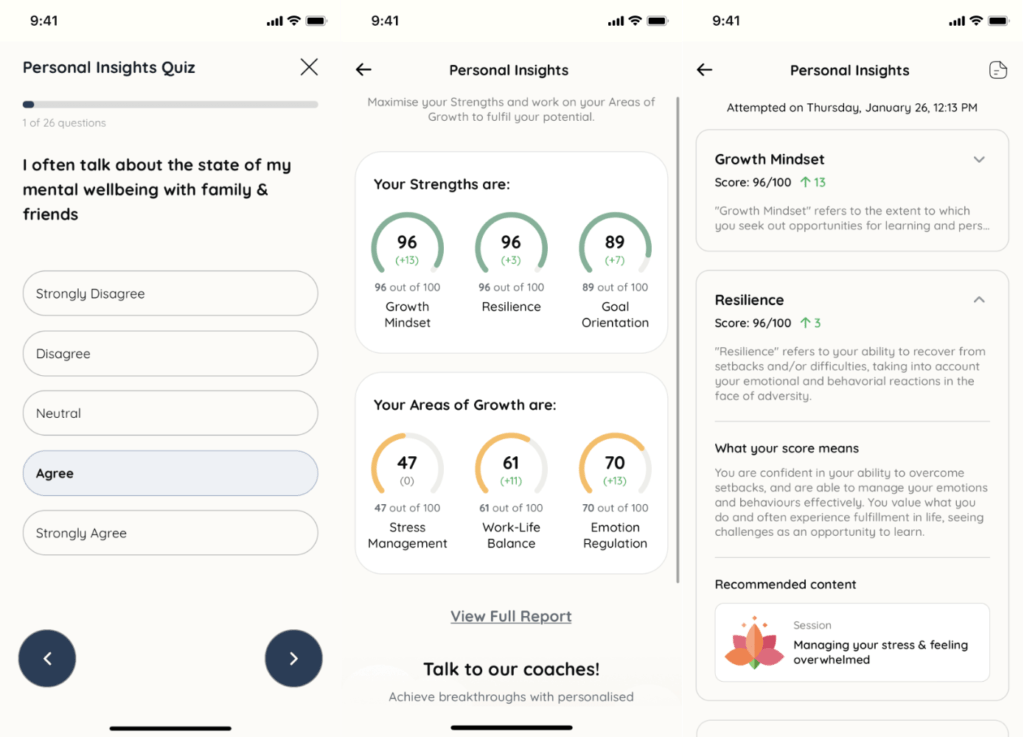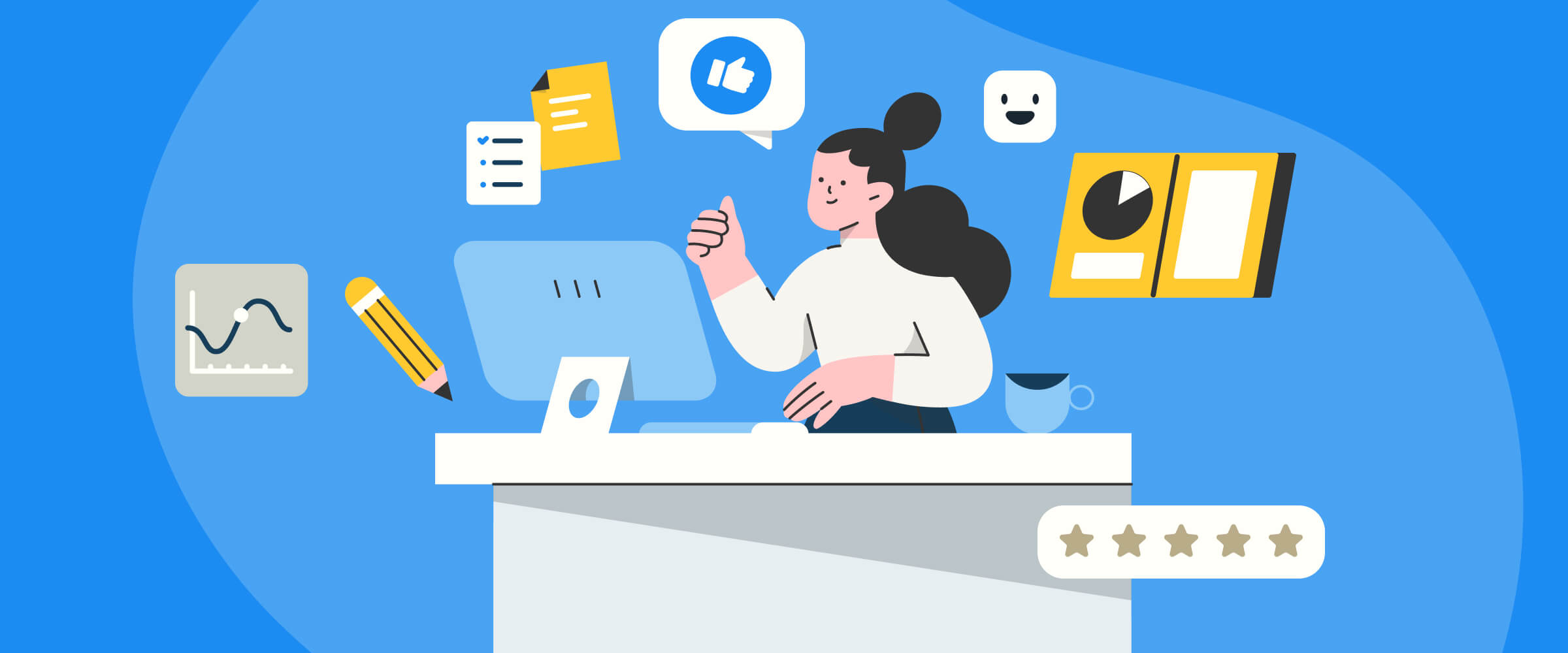This article was contributed by an organisational psychologist based in one of Singapore’s government agencies.
“How do I measure employee wellbeing in my organisation?”
As an organisational psychologist, I’ve been asked this more times than I can count during the pandemic. No doubt, companies had reason to be concerned. It’s no secret that individuals across the world have experienced a spike in negative emotions due to COVID-19. Based on Gallup’s study in 2022, 42% and 41% of respondents felt worried and stressed respectively.
With more than 90% of business leaders recognising that wellness contributes to productivity and performance, surveys have become a common intervention for measuring employee wellbeing. But what should employers consider before designing one?

Stage one: Conceptualise
Before you start drafting questions, ask yourselves these three questions:
What is your objective?
Is your survey meant to be a quick “pulse check” on your employees’ present mood or a comprehensive assessment of factors that influence wellbeing? (This could include stress levels, workload, and relationships with co-workers). Your objective determines the survey’s content, length, and what you want to do with the results.
Also, how does it fit in with your existing Employee Assistance Program (EAP) or wellbeing frameworks? It may be wise to take stock of recent and upcoming surveys that departments may use to address policies, processes, and systems in silos. The last thing you want is to induce survey fatigue.
What is the frequency?
Your objective determines the frequency of these surveys. If it’s a snappy pulse check with fewer than five questions, you may run them every month or two. If it’s a more comprehensive assessment with open-ended questions, why not run them only once every year or two? This gives the management and stakeholders time and space to deep-dive into its results, develop interventions, and implement changes.
What is the best time?
If you’re running a general survey, avoid seasons where changes within the company may skew employees’ responses. Probing employee morale immediately after the appraisal season, for instance, may not paint the most complete picture.
But an exception applies: If you’re learning about how employees are coping with specific stressors, like organisational transformation, surveying them in the thick of it makes sense. You’ll receive timely and accurate feedback, and learn how to support employees through these changes.
Either way, you’d want to run these surveys when employees are actually at work (that may mean avoiding the holiday season) but not overwhelmed by the day-to-day operations. Doing so during a lull period, for example, could translate to higher participation.

Stage two: Develop questions
Build on an existing framework
Previously, IHH Healthcare shared that it’s adopted the World Health Organisation’s model of wellbeing, and how it encompasses physical wellbeing, mental wellbeing, emotional wellbeing, recovery, and a sense of purpose. Likewise, the components of your EAP or key thrusts in your wellness framework – from self-resilience to open communication – can help formulate your questions.
To track results over time, you’ll want to use a fixed set of questions. Intellect Dimensions, for example, is a 26-item framework that allows you to do just and calculate the Return on Investment. It measures your workforce’s wellbeing and productivity across five facets: psychological resources, work outcomes, wellbeing, stigma, and absenteeism.
This is what the interface looks like to employees:

Include open-ended questions
At the risk of sounding like a broken record, the level of detail you wish to gather in the responses depends on – you guessed it – your objective.
Scaling questions (e.g. 1 = Strongly Disagree, 5 = Strongly Agree) are easier to complete and allows you to analyse and track results over time quantitatively. Open-ended questions, while more tedious to fill out, give employees room to express themselves. These free-text responses often end up giving the solutioning team ideas, too.
If you’re not following up on the results with qualitative measures, like focus group interviews, we recommend including open-ended questions. But remember: Even the longest survey should be completed within 20 minutes.
Avoid double-barrelled questions
Phrase your questions simply and succinctly. For example, responses to the statement, “I enjoy my work and share good relationships with my co-workers” could pertain to work enjoyment and/or workplace relationships, making it difficult to interpret your findings. Save yourself the headache by avoiding double-barrelled questions altogether, or adopt questions from validated scales if you wish to measure a psychological construct like “resilience”.
Refrain from asking for particulars
As a general rule of thumb, only ask for what you need for analysis. If the objective is to tailor interventions for employees with different departments, job functions, leadership appointments, and years in service, it may be reasonable to ask for these particulars.
In other cases, asking for employees’ demographics may be sensitive. Unless there is a need to follow up with individuals, ensuring anonymity (i.e. by not collecting identifiers like name or staff number) and confidentiality (i.e. assuring that direct managers will not see their responses). With psychological safety, employees will be more forthcoming about issues they’re facing.

Stage three: Implement the survey
Trial your survey systems
Whether the survey is administered via an internal survey platform or an external vendor, enlist co-workers across the company to test the links and options before the launch. This ensures that the data is accurately captured, access rights are correctly configured, and administrative issues are nipped in the bud before deployment.
Communicate your intent
Now that your survey is raring to go, put the word out to garner interest. You can tease it through the company’s communication channels, or have a senior leader explain its objective, encourage employees to respond, and assure them of their anonymity and confidentiality. When employees see that the management is taking the exercise seriously, they will feel more encouraged to participate.
Once the survey goes live, tell employees when it’s due, which should be at least one week away; how long it will take to complete, so they can block time out accordingly; and who to contact should technical issues arise.
Send reminders
Not all employees are responding. Should you be worried?
Well, a response rate of 50% and above for a large company that is 1000-strong, and 60% for smaller companies, are good enough for findings to be statistically significant. It doesn’t hurt to track the response rates and trigger reminders nearing the deadline, especially if you foresee difficulty meeting this figure. Where appropriate, you can also reiterate the objective and, again, assure employees of their anonymity and confidentiality.

Stage four: Follow-up
Communicate, communicate, communicate.
So employees don’t assume that their opinions have disappeared into a black hole, conclude the survey by thanking them for their openness and time. After analysing the data and solving problems they have flagged, it helps to report your findings and follow-up action you plan to take as a company. This creates a culture of transparency and trust. When employees feel seen and heard, engaging them in subsequent exercises will only get easier.
Measure employee wellbeing with Intellect Dimensions
Do your employees feel cared for by your organisation? Is there psychological safety in your workplace? What percentage of them are considering leaving? These are questions one-one-ones cannot answer, but Intellect Dimensions covers these bases (and more) while assuring your employees of data privacy and confidentiality.
An overview of how your employees are really feeling at work takes the guesswork out of employee engagement. With aggregated and anonymised data, you can make more informed decisions about your organisation’s wellbeing strategy. And if you’re not sure where to begin, our client success managers will partner with you in tailoring growth interventions to your employees’ needs.





